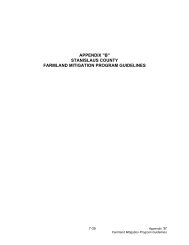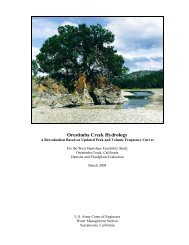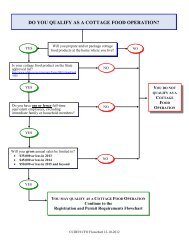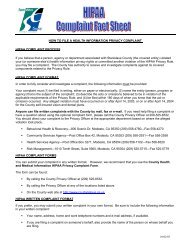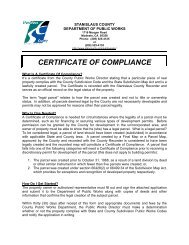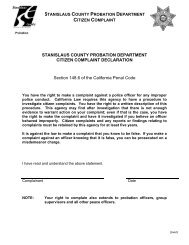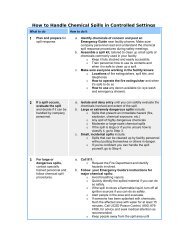Orestimba Creek Feasibility Study - Stanislaus County
Orestimba Creek Feasibility Study - Stanislaus County
Orestimba Creek Feasibility Study - Stanislaus County
You also want an ePaper? Increase the reach of your titles
YUMPU automatically turns print PDFs into web optimized ePapers that Google loves.
Economics Appendix – Draft Report - <strong>Orestimba</strong> <strong>Creek</strong> <strong>Feasibility</strong> <strong>Study</strong>, <strong>Stanislaus</strong> <strong>County</strong>, California – September 2012<br />
Last year's disaster (2009) swept pollutants into the Red and its tributaries, although the<br />
sheer volume of water and accelerated flow rate weakened the effect, said David Glatt,<br />
environmental chief for the North Dakota Department of Health. Even as officials were<br />
ready to declare victory in this year's flood fight, Glatt emphasized the importance of<br />
safeguarding drinking water supplies, particularly in rural areas where private wells<br />
may have been submerged.<br />
No large-scale water-quality testing was conducted in 2009, but officials monitored<br />
hospital emergency rooms and found no upswing in visits that would have indicated an<br />
outbreak of flood-related sickness, Glatt said. Officials credited experience and public<br />
education with preventing serious environmental health problems.<br />
"We've had a little familiarity with floods in recent history," Glatt said. "People have had<br />
an opportunity to prepare and minimize the harm."<br />
Cities in the region have reduced their exposure to contaminated water over the years by<br />
elevating wellheads or surrounding them with dikes to keep floodwaters out. But<br />
numerous wastewater treatment systems were overwhelmed during last year's flooding,<br />
forcing officials to dump raw sewage into the rivers. A few have requested permission to<br />
do likewise this year if necessary.<br />
Private well users are particularly vulnerable. State and local agencies have provided<br />
information about protecting residential wells and stand ready to help disinfect<br />
contaminated ones. Fargo-Cass Public Health last week warned owners of submerged<br />
wells not to use the water for drinking or cooking until it can be tested. Agencies also<br />
urged people to secure household and farm chemicals, fuel tanks and other potential<br />
sources of pollution.<br />
Dead livestock is a particular threat in Great Plains ranch country. Some 90,000 head of<br />
cattle were lost during last year's calamity. They're a potential source of pathogens that<br />
can pollute wells and surface waters.<br />
"Even a typically normal, healthy cow has E. coli bacteria in its gut," Bergland said.<br />
"You need to properly dispose of the bodies before they drift away in the water."<br />
State agencies, including the North Dakota National Guard, helped retrieve bloated<br />
carcasses and advised ranchers how to deal with them. It's not as simple as it sounds. If<br />
buried, the bodies must be placed above the water table under at least 4 feet of loamy,<br />
clay soils. If burned, only organic fuels such as wood can be used and a state permit is<br />
required.<br />
Once immediate flood dangers have passed, ecological aftereffects can persist for months<br />
or years.<br />
Phosphorus fertilizers that wash into rivers and lakes can stimulate growth of algae<br />
blooms that reduce oxygen levels and kill fish. Heavy soil erosion along riverbanks<br />
degrades fish habitat and spawning areas, particularly in streams that feed larger rivers<br />
such as the Red.<br />
57






